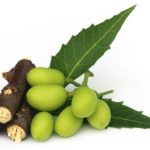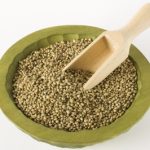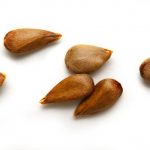Grain, seed and pulse hydration hydration or soaking is important for a number of reasons. It’s required for mashing as in brewing, or the general preparation of foodstuffs because the texture is changed which alters grinding. The removal of toxins and antimetabolites as part of an extraction process also relies on soaking. Hydration also reduces cooking time, nutrient loss and changes the quality of the food produced. That latter point is important ! Soaking of seeds and grains reduces gas production in humans and other monogastric animals due to anaerobic digestion or the fermentation of oligosachharides by intestinal bacteria (Jood et al., 1985). It is also a prerequisite for germination as in malting by activating the enzymes that begin the process of life.
Hydration and cooking are separate processes but the former impacts on the latter considerably. When cooking any grain, pre-soaking helps soften the seed and allows starch to gelatinize before heat is applied. Most soaking processes require between 12 and 16 hours prior to cooking. Any longer and the seed is prone to unwanted fermentation and lost process time.
Grains tend to swell and change shape during hydration. The characteristics of hydration include mass gain to a point of maximum hydration, volume increases and water content increase. Volume increase is important when knowing how many grains are needed to fill a can or other package.
The seed coat is often the limiting step in hydration. Piercing or complete removal helps hydration immeasurably mainly by improving the rate.
Models for general grain hydration have not been easy to develop. Hsu in 1983 first produced a model for grain hydration using a distributed parameter model with the effective diffusivity of water in the grain as the critical parameter. One feature was that the grain did not change shape !
Models that successfully describe the distribution of water or moisture in grains have relied upon the grain remaining constant in volume but this isn’t actually the case. Soybeans apparently increase their volume by 30% which is highly significant especially when modelling hydration in grains (Coutinho, 2006). Models to account for volume changes such as swelling have been devised. Coutinho et al., (2005) described a phenomenologiocal model with lumped parameters for soybean hydration based on radius versus time that was then incorporated into a differential equation for the hydration process.
References
Coutinho, M.R. (2006). Modelling, Simulation and Analysis of the Hydration of Soy Beans. 200p. Thesis (Doctorate in Chemical Engineering) – State University of Maringá, Brazil, 2006.
Hsu, K. H. (1983), A Diffusion Model with a Concentration-Dependent Diffusion Coefficient for Describing Water Movement in Legumes During Soaking. J. Food Sci., 48 pp. 618–622. doi: 10.1111/j.1365-2621.1983.tb10803.x
Jood, S., Mehta, U., Randhir, S., Bhat, C.M. (1985) Effect of processing on flatus-producing factors in legumes. J Agric. Food Chem. 33(2) pp. 268–71.
Wang, H.L. Swain, E.W., Hesseltine, C.W. Heath, H.D. (1979) Hydration of whole soybeans affects solids losses and cooking quality. J. Food Sci., 44 (5), pp. 1510‑1513.



Leave a Reply